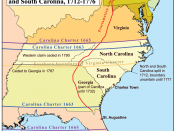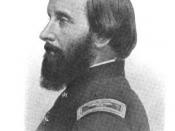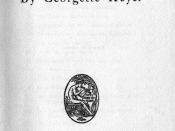The Northern and Southern colonies in the seventeenth century had many differences and similarities in the way their region if the world was maintained and controlled. Those comparisons and contrasts can be discovered through three main aspects: political, social, and economical.
Politically, the North and South had differences on who had the bigger voice in the society. In the North, church membership was key to be accepted into the colony. The church controlled the laws and were the most acknowledged in the colony. However, in the South, instead of the church members being boss, land owners were the dominant party. These land owners were the wealthiest and had control over the laws.
Besides the issue of who ruled in the society, the colonies had many similarities between the two sides. Both lands had royal governors who controlled and ruled. They both had the law that enforced the power of the first.
This meant that the first child inherited everything from their parents. The North and South also had legislatures that had the power to create, amend, and ratify the laws. Both structures of each of the governments were politically similar; therefore although on opposite sides, the South and North still had similarities between them.
Based on the economic status, the colonies had more differences than similarities. The North had small farms while the South had larger ones called plantations. The main trade item in the North was lumber. The South had less raw materials then the North and mostly traded cotton. The cotton crop was so important to the Southern colonies, it was nicknamed King Cotton. At that time, the North was starting to become more industrialized. The differences between the two sides were that the North had more raw materials for trade than the South, but the South had larger farms and work areas.
Although there were major economic differences, there were similarities as well. The crop, tobacco, was on both sides. The North and South both supported the use of indentured servants, people who worked their debt off with labor work for land-owners for about seven years. Both economic policies based their ideas off a nationÃÂs prosperity through its capital and an unchanging world economy and international trade. This economic theory is called mercantilism. Similarities can be found in the economical aspect of the seventeenth century colonists.
The reason for the SouthÃÂs plantations out-sizing the NorthÃÂs small farms was because of the social aspect of the two sides. The North was more town-centered while the South had based the structure of their lives around the plantations. Northern colony life mainly revolved around the church members. The South had more focus on the wealthy land owners. The Northern landowners were less advanced on the big-city type deals.
Some similarities would be the slaves and the status of women in the society. Although the women were treated better than the slaves, they were not given any respect. In the colonies, the females had no say about anything including their rights, or lack there of, such as the right to choose who they would marry. The slaves had it worse than the women. Both sides commonly used slaves as a force of labor. Two groups of people in each society were controlled by the other groups of wealthy people.
Smaller details could be found about the differences and similarities between the North and South, but the general ideas were displayed. Three different outlooks of the many colonies were pointed out.
Work CitedBailey,Thomas A., and David M. Kennedy. "The American Pageant". New York: Houghton Mifflin Company, 1998.





